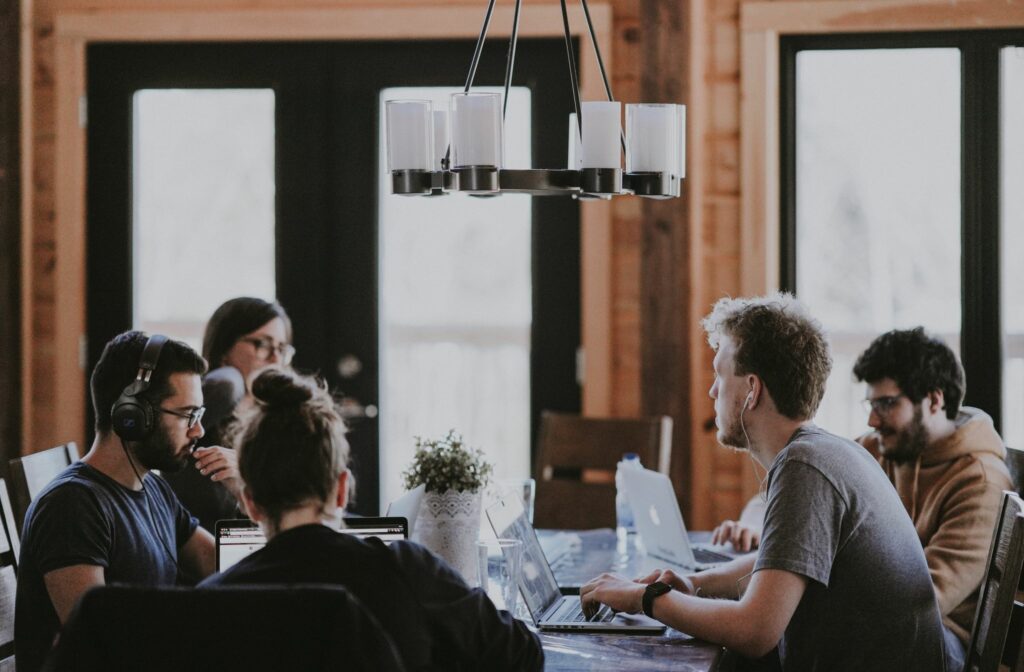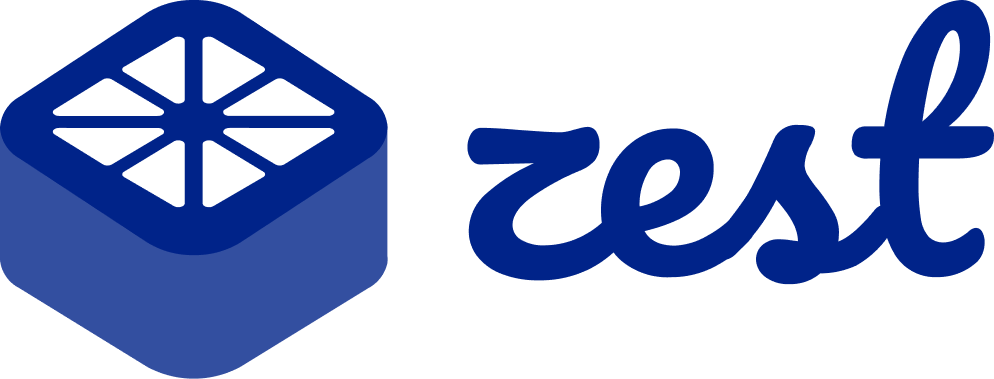Blog
Building Better Products: The Questions You Should Be Asking Your Development Team

Introduction
In software development, managing a development team, whether it be an in-house team or an outsourced software development team can seem like navigating through a labyrinth without a compass.
Even the most promising software projects can be doomed when there is no clear understanding of what is being done and how.
This can be especially difficult for non-technical founders as they may feel lost in a sea of tech jargon.
In today’s blog, we’ll discuss some of the main questions that you should be asking your development team.
This will help you get a better understanding of the current product development processes, unearth areas of friction, and start to reduce them.
We will start off by looking at some of the key characteristics of a struggling development process and then show you how to solve them with a series of questions.
Remember, in order to succeed, you’ve got to work hand in hand with your development team to find common ground and a process that allows for seamless collaboration.
Scale your development and software with confidence!
Master strategy, roadmap, and code execution and start to ship more on each sprint.
Identifying the Symptoms

Before getting into the essential questions, you’ve got to first diagnose the current state of your development operations. Below is a list of signs that you may be struggling with:
- Reopening tickets: If you are constantly having to reopen tickets and send them back to developers for revision, it could be a sign of communication breakdown.
- Constant delays: This is where you find yourself having to re-adjust timelines and pacify key stakeholders.
- Missed estimates: Project estimates can never be perfect, however, there are various ways in which you can start to get accurate project estimates from your developers.
- Unhappy users: This is where your users keep finding bugs, especially those that obstruct them from completing key tasks on your software or app which is a major red flag in Custom Web application Development.
- Being the middleman: As a founder or lead, your day-to-day activities should be centered around accomplishing key tasks that move the business forward and not explaining requirements to developers, documenting bugs, or managing user grievances.
- Lack of a transparent development process: If your development team is operating without a clear and well-defined roadmap, with phrases like “it’s ready when it’s ready” then this is another huge red flag
These are all symptoms of a broader issue, more specifically a lack of proper project management processes. It’s important to understand that if you don’t get ahead of these issues, you are risking the overall quality of your codebase.
While having seasoned developers is also important, without an organized approach to managing tasks, timelines, and team collaboration, even the best resources can fail.
Build a simple product that works and converts.
Get step-by-step guidance from product managers, UI/UX designers, and tech leads, taking you from idea to launch
Essential Questions for Your Development Team
In order to bridge the gap between the current challenges you may be facing and a frictionless and scalable development process, a constructive dialogue between you and your development team is paramount.
The following questions will help you identify the pain points and pave the way for collaborative solutions. Process Implementation
Behind every successful software product is a structured process that brings purpose, clarity, and efficiency to the team.
Have we established a well-defined product development process?
Understanding the current process if any, is the first step. This should be done collaboratively, by refining what is in place and having a single ‘source of truth’.
How can we continuously evaluate and improve our product development process?
Here, the aim is to be retrospective and iterative. The software development space is constantly changing so you and your team have to ask yourself whether or not you falling behind and what areas can be improved.
Documentation Enhancement
A clear documentation process reduces errors, streamlines onboarding when new members join the team and serves as the single ‘source of truth’
How can we ensure that our documentation is comprehensive and stays up-to-date?
Here, you have to set up regular audits and foster ownership to keep the documentation relevant.
What tools or training do we need to undertake to enhance our documentation capabilities?
Training and development for your team is the only way to keep them sharp and develop their skills. As a founder, it’s also important to have some knowledge of the product development process.
Investing in the right tools and training resources can yield significant long-term benefits.
Time Management
Time in software development is all about prioritizing, focusing, and delivering on tasks.
Are we allocating specific blocks of time for product management in our calendar?
The reason behind this is to allocate time and even subsequent resources to ensure attention is paid to product strategy and planning.
How are we prioritizing tasks and features during this dedicated time?
A clear understanding of your business goals, user needs and how to leverage the product to solve and deliver on these two criteria should be the focus here.
This is called the product-led approach, which will help guide your prioritization on which tasks and features to focus on and why.
Decision Making
In a rapidly evolving space like software development, your teams’ ability to adapt paired with strategic thinking could be the difference between success or stagnation and failure.
How are we planning our product roadmap?
Here, you’re trying to find out how you are planning your development. Short iterative development strategies are always ideal here (sprints)
What contingencies do we have in place if and when we face unforeseen issues in our sprints?
Always have a plan B and even a plan C and D in case you run into blockers. Software development is not as straightforward all the time. Problems will occur causing delays in sprints and the delivery of features.
At Trustshoring we always like to advise our clients to always create a space where you as a founder or product leader can always ask your developers the reason behind their estimates.
When a developer says a task is going to take x amount of time. Ask why.
This way, you open up a dialogue and a way to derisk certain tasks and then have ways in which you can mitigate problems.
Understanding the User
The user is always the center of your focus. Their needs, behaviors, and feedback shape the product’s development and evolution.
Have we defined clear customer personas and user journeys?
User personas serve as a compass to ensure that the product is always aligned with the users’ needs
How are these personas and journeys being communicated and utilized within the team?
Here, you are trying to make sure that everyone, especially in the product team, deeply understands the user and how they are interacting with the app or software.
Expertise and Leadership
Software development, like many other businesses, requires key expertise and skills in the right positions to succeed. You need to not only find and hire the right developers but product leaders as well.
Have we considered the benefits of bringing in a product consultant or hiring a fractional CTO?
Now we can put an asterisk next to this one because some of these decisions you’ve got to make by yourself as a founder.
However, it’s important to at least get an idea of the level of your leadership and consider the clarity, direction, and momentum an external hire, especially a seasoned one could bring.
At Trustshoring, we offer fractional leadership options for companies since they offer companies a wealth of experience and skill at a fraction of the cost.
What success stories or case studies can we learn from, where proper leadership transformed the development process?
History will always serve as the best teacher. Try and learn as much from your successes and failures as much as you can.
Emulating successful models can drastically reduce the learning curve.
The Implementation Strategy
In this section, we will show you how to implement some of the changes that are needed in order to streamline your operations.
Remember, implementation is a hands-on approach, built on collaboration continuous feedback, and clarity.
Collaboration with Your Development Team
Building a product is not a solo endeavor. It requires creativity and collective expertise. Your job as a leader is to minimize micromanagement as much as you can and enable:
- Open Channels of Communication: Especially during estimations where your developers are giving estimates on how long a task will take. As we mentioned before, this helps mitigate problems and de-risk tasks. Try and foster an environment where every team member can share ideas comfortably, raise concerns, and seek clarification
- Skill Development: Encourage team members to keep sharpening their skills. As you may know, the tech space is rapidly changing and this will not only uplift your product quality but also instill a sense of growth among the entire team.
- Team Workshops: Organize brainstorming workshops to build team cohesion and foster collective collaboration. This is where the best ideas come from and also grievances are raised and addressed.
Setting Clear Milestones and Expectations

A journey without a map will often lead to detours and even getting lost. Below are some guides on how to set clear and achievable milestones.
- SMART Goals: Here the goal is to ensure that goals are Specific, Measurable, Achievable, Relevant, and Time-bound. This will reduce ambiguity and enhance the overall team focus.
- Regular Check-ins: Instead of waiting until things go bad, set up processes to check in on your team without being overly intrusive. A good way is to set up daily standups.
- Celebrate Achievements: Finally, make sure you recognize and celebrate the small wins to boost team morale and motivation.
Continuous Feedback Loop
Feedback is the lifeblood of continuous improvement. It makes sure that the product and the entire team remain aligned with the business goals and the users’ needs
- User Testing: Make sure you engage with real users and find out how they are using your product and software. Usability testing will help you uncover issues and a fresh perspective.
- Internal Reviews: Encourage peer reviews within your engineering team to ensure code quality and collective ownership.
- Iterative Development: Finally, adopt a culture of iteration with your development. This should be based on feedback. Be prepared to refine, revamp, and even pivot if need be.
Conclusion
The journey from chaos and firefighting to structured software development will not happen overnight.
You’ve got to stick to and respect the process in order to get to a place where products are built efficiently and with scalability in mind and you’ve got teams that work in harmony and where your delighted users are getting features delivered to them in time.
True success lies within the intersection of scalable tech, collaborative teams, and effective management. As a leader, your role is to create an environment where these elements thrive together and drive innovation and growth.
Are you interested in taking your software product to the next level? Get in touch with us today!
Read more


Case study:
Zest
Learn how Zest used Trustshoring services to scale their business!

Unleashing Development Leadership with Fractional CTOs

What is the Average Software Developer Salary: the USA vs Eastern Europe

How to Use AI for Customer Service & Complaint Management

The Secrets of Successful Product and Team Management: Tips for Tech Leaders
Create a free plan for growth
Speak to Victor and walk out with a free assessment of your current development setup, and a roadmap to build an efficient, scalable development team and product.
“Victor has been great. Very responsive and understanding and really knows his stuff. He can go the extra mile by tapping into his prior experiences to help your company out. Really enjoyed working with him.”
Founder of Agency360

Victor Purolnik
Trustshoring Founder
Author, speaker, and podcast host with 10 years of experience building and managing remote product teams. Graduated in computer science and engineering management. Has helped over 300 startups and scaleups launch, raise, scale, and exit.